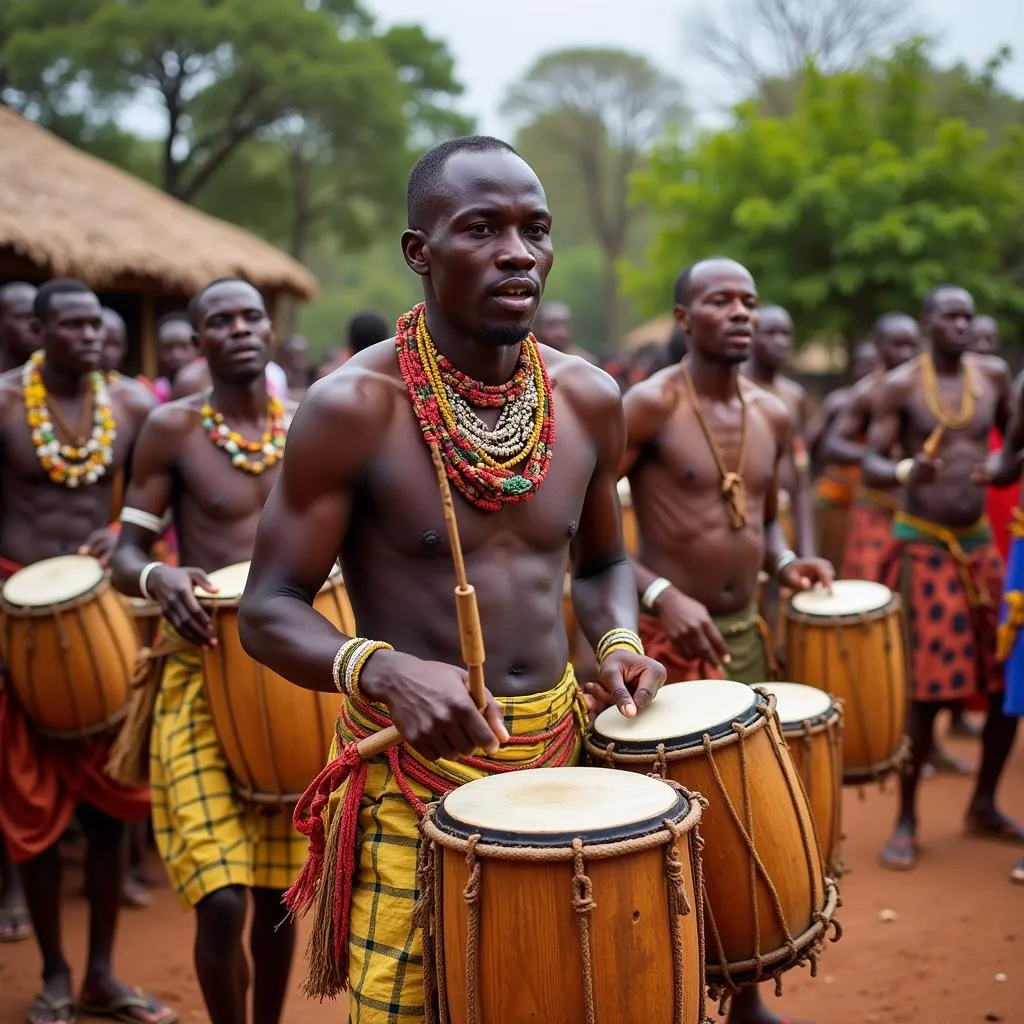African Countries According to Population: A Comprehensive Guide
Africa, the second-largest continent by land area, is also home to a diverse array of cultures and peoples. This incredible continent is comprised of 54 sovereign states, each with its unique history, languages, traditions, and landscapes. One fascinating aspect of African diversity is the varying population sizes across these nations. Understanding the demographics of each country offers valuable insights into its social, economic, and cultural dynamics. This article will delve into the populations of African countries, providing a comprehensive overview, exploring key factors influencing population size, and discussing its implications for the continent’s future.
The Most Populous African Nations
Africa’s population is constantly evolving, with some countries experiencing rapid growth while others see slower rates of change. Here’s a look at the top 10 most populous countries in Africa as of 2023:
- Nigeria: With an estimated population of over 214 million, Nigeria is the most populous country in Africa. Its rapid population growth is fueled by high birth rates and a relatively young population.
- Ethiopia: Following closely behind Nigeria, Ethiopia boasts a population of over 117 million. This country has also witnessed substantial population growth, driven by factors like high birth rates and improved healthcare.
- Egypt: With a population of over 104 million, Egypt is the third most populous country in Africa. While its birth rate has declined in recent years, its population remains substantial due to a large youth population and a high life expectancy.
- Democratic Republic of Congo: With an estimated population of over 94 million, the Democratic Republic of Congo ranks fourth in Africa. Its population growth is influenced by high birth rates and a relatively low life expectancy.
- South Africa: Home to over 60 million people, South Africa is the fifth most populous country in Africa. Its population growth has slowed down in recent years, largely due to declining birth rates.
- Sudan: With a population exceeding 45 million, Sudan is the sixth most populous country in Africa. Its population has grown steadily in recent years, mainly due to high birth rates.
- Algeria: With a population of over 44 million, Algeria is the seventh most populous country in Africa. Its population growth has slowed down in recent years, largely due to declining birth rates.
- Tanzania: With a population exceeding 62 million, Tanzania is the eighth most populous country in Africa. Its population growth is driven by high birth rates and a relatively young population.
- Kenya: Home to over 55 million people, Kenya is the ninth most populous country in Africa. Its population growth has slowed down in recent years, largely due to declining birth rates and improvements in healthcare.
- Uganda: With a population exceeding 47 million, Uganda is the tenth most populous country in Africa. Its population growth is fueled by high birth rates and a relatively young population.
Factors Influencing Population Size in Africa
Several factors contribute to the diverse population sizes across African nations. Understanding these factors provides a deeper understanding of the continent’s demographic trends and challenges.
1. Birth Rates:
Birth rates are a significant factor driving population growth in Africa. Many African countries have historically experienced high birth rates, influenced by cultural factors, traditional family values, and limited access to family planning services.
“High birth rates are a reflection of the cultural and economic realities in many African communities,” explains Dr. Amina Diallo, a leading demographer at the African Institute for Development Studies. “Large families are often seen as a source of labor, support, and economic security.”
2. Mortality Rates:
Mortality rates, particularly infant and child mortality, also play a crucial role in population growth. While significant progress has been made in reducing mortality rates in recent decades, some countries still face challenges related to inadequate healthcare infrastructure, infectious diseases, and malnutrition.
3. Life Expectancy:
Life expectancy is another essential factor determining population size. In recent years, improved healthcare and sanitation have led to increased life expectancy in many African countries. However, disparities in access to healthcare and ongoing health challenges like HIV/AIDS continue to impact life expectancy in some regions.
4. Migration:
Internal and international migration patterns also influence population dynamics in Africa. Rural-urban migration is common, with people seeking economic opportunities and better living conditions in cities. International migration, primarily to neighboring countries or Europe, is also a significant factor for some African nations.
The Implications of Population Growth in Africa
Population growth in Africa presents both opportunities and challenges.
Opportunities:
- Economic Growth: A large and growing population can fuel economic growth by providing a larger workforce and expanding consumer markets.
- Innovation and Development: A young and energetic population can drive innovation and creativity, leading to new technologies and solutions for social and economic challenges.
- Enhanced Global Influence: A growing African population can enhance the continent’s influence on the global stage, making it a more significant player in international affairs.
Challenges:
- Resource Strain: Rapid population growth puts pressure on resources such as land, water, and energy, potentially leading to environmental degradation and resource scarcity.
- Unemployment and Poverty: High population growth can lead to unemployment and poverty if economic growth does not keep pace with population expansion.
- Social and Political Challenges: Population growth can exacerbate existing social and political challenges such as inequality, conflict, and instability.
The Future of Africa’s Population
Africa’s population is projected to continue growing in the coming decades. The United Nations estimates that Africa’s population will reach 2.5 billion by 2050 and 4.4 billion by 2100. This rapid population growth presents both opportunities and challenges for African nations.
“Addressing these challenges requires comprehensive policies that promote sustainable development, empower women, improve education and healthcare, and foster economic growth,” says Professor Olusegun Oduwole, an economist at the University of Lagos. “Investing in human capital and creating opportunities for all Africans will be essential for harnessing the potential of Africa’s growing population.”
Frequently Asked Questions
1. What is the average population density in Africa?
The average population density in Africa is about 42 people per square kilometer, but this varies greatly depending on the country.
2. Which African countries have the highest and lowest population densities?
The highest population density in Africa is found in Rwanda, with over 500 people per square kilometer. The lowest population density is found in Namibia, with less than 3 people per square kilometer.
3. What are the main factors driving population growth in Africa?
The main factors driving population growth in Africa are high birth rates and declining mortality rates, particularly infant and child mortality.
4. What are the potential consequences of Africa’s rapidly growing population?
Africa’s rapidly growing population presents both opportunities and challenges. Opportunities include economic growth, innovation, and enhanced global influence. Challenges include resource strain, unemployment, and social and political instability.
5. What can be done to address the challenges associated with Africa’s population growth?
Addressing the challenges associated with Africa’s population growth requires comprehensive policies that promote sustainable development, empower women, improve education and healthcare, and foster economic growth. Investing in human capital and creating opportunities for all Africans will be essential for harnessing the potential of Africa’s growing population.
Conclusion
Africa’s diverse population landscape is a testament to the continent’s rich history and dynamic cultural tapestry. Understanding the factors influencing population sizes in each African country provides crucial insights into its demographic trends, economic development, and social challenges. As Africa’s population continues to grow, finding sustainable solutions to manage resources, create opportunities, and ensure a brighter future for all is crucial.

